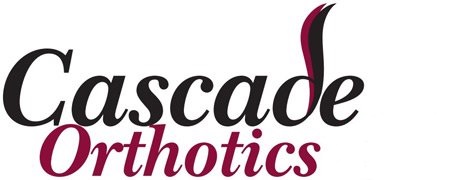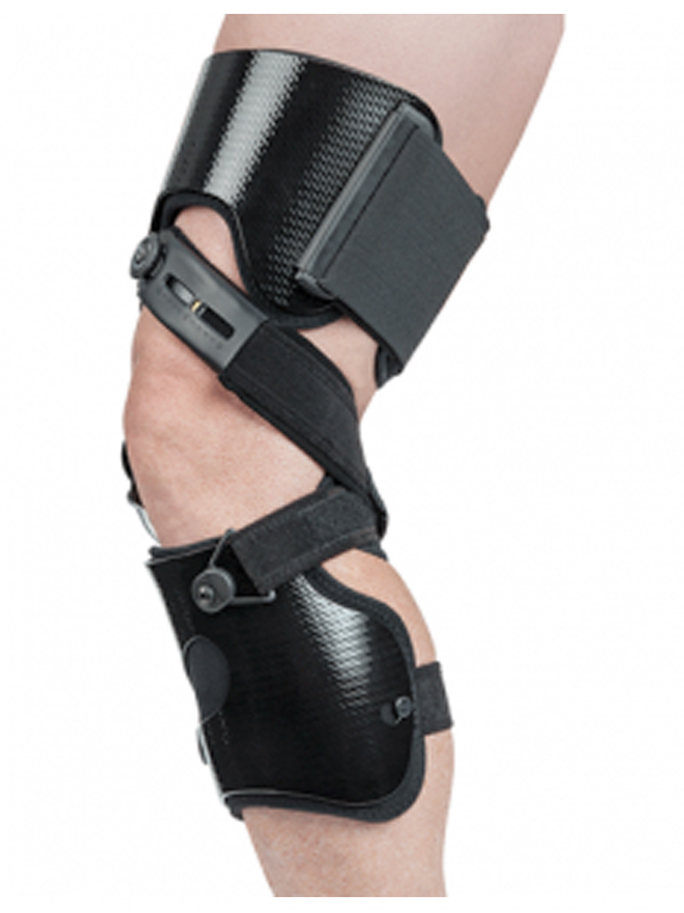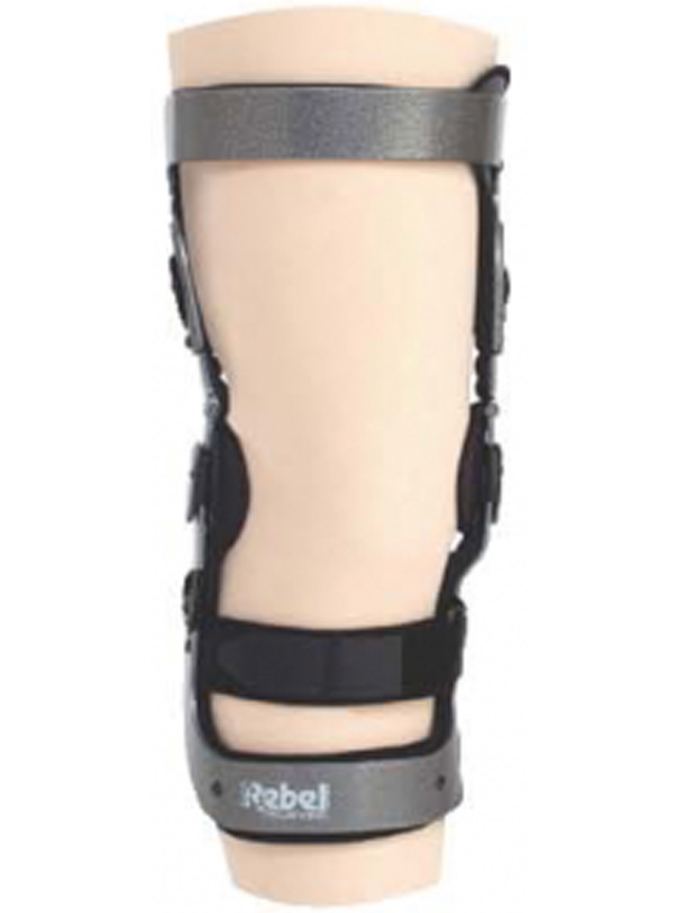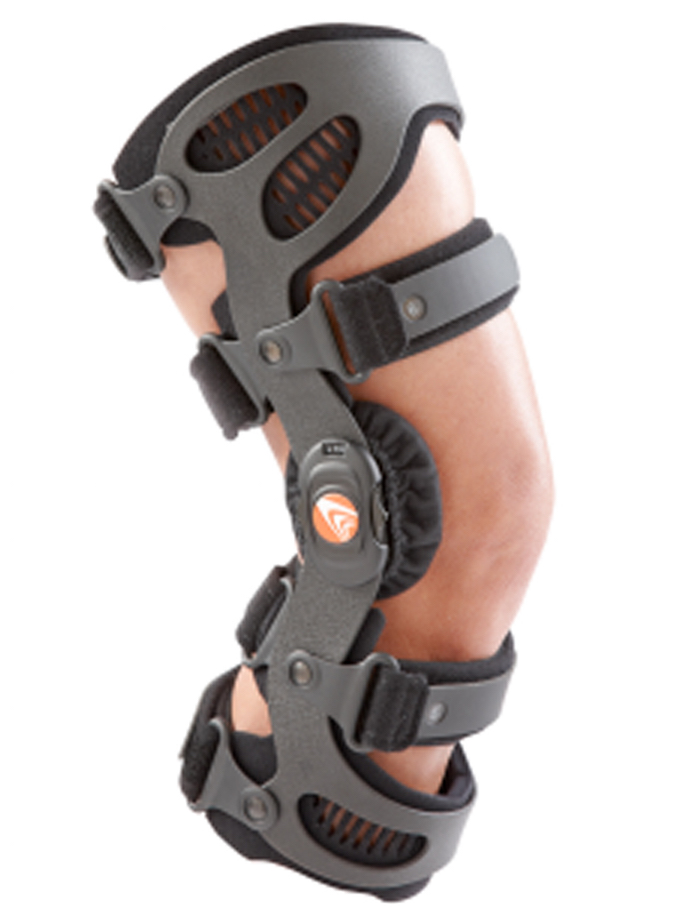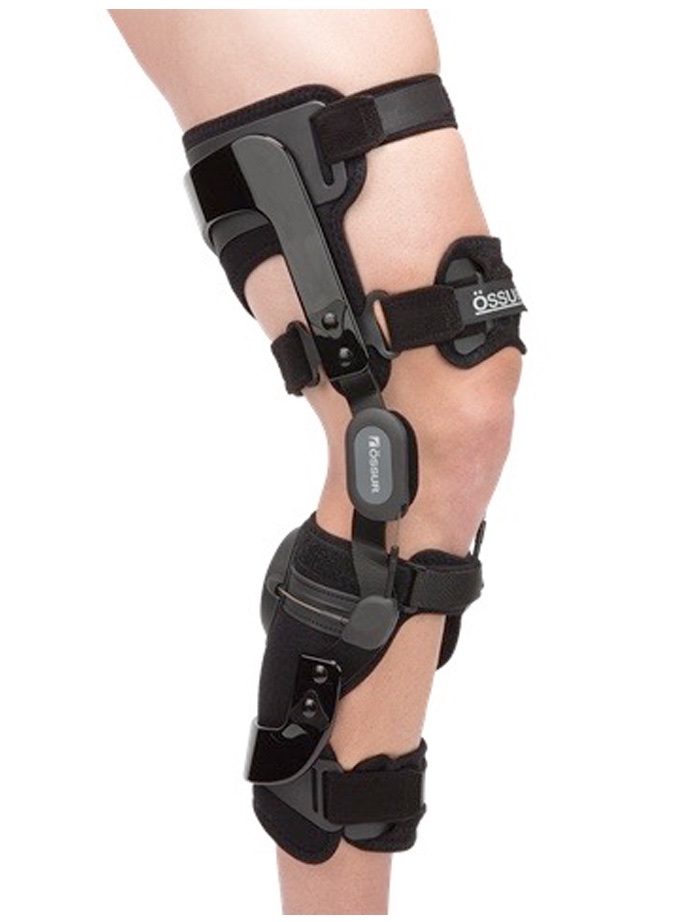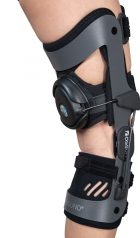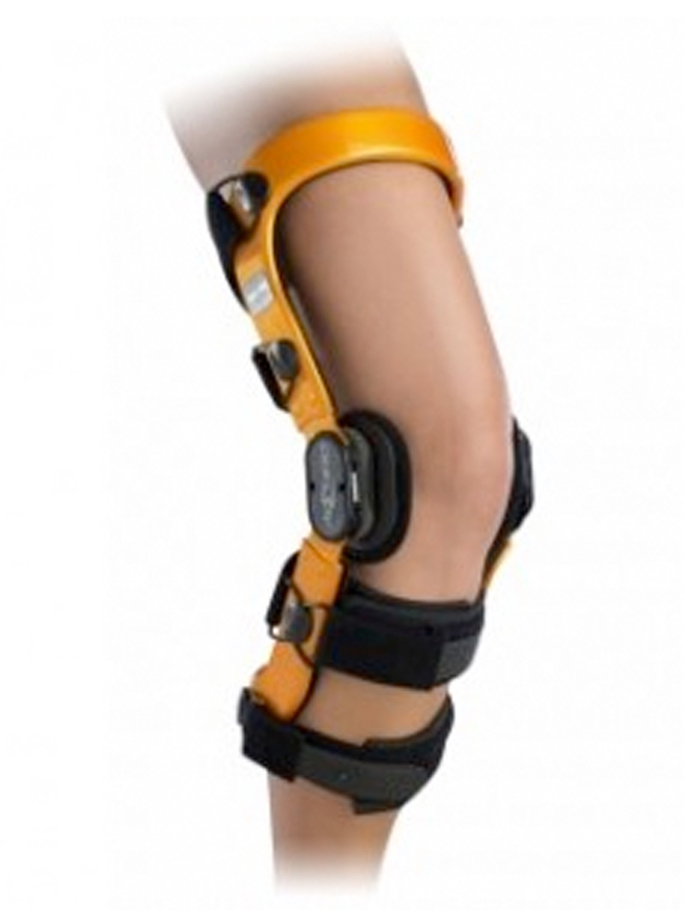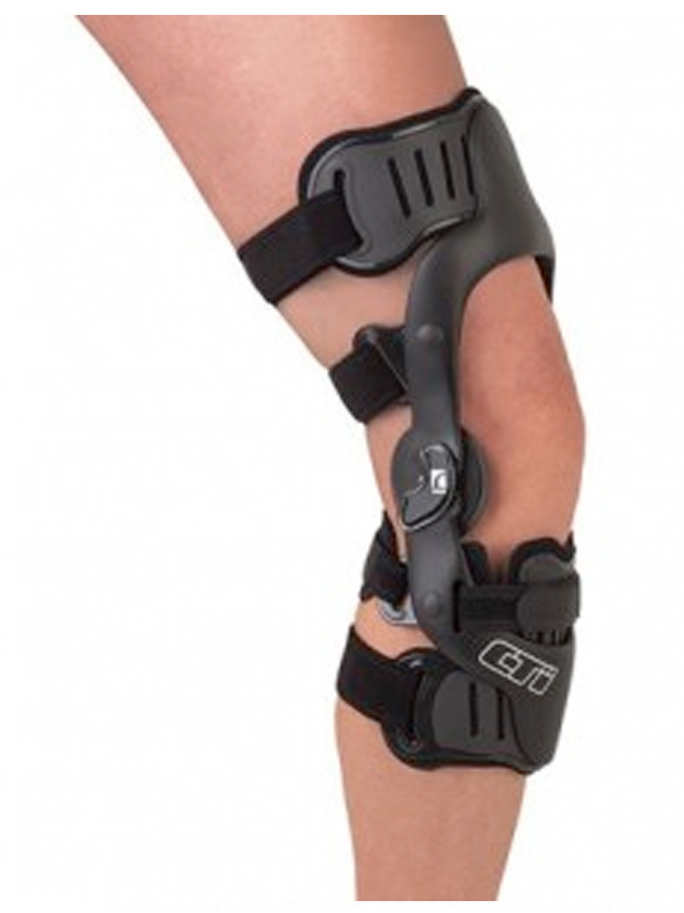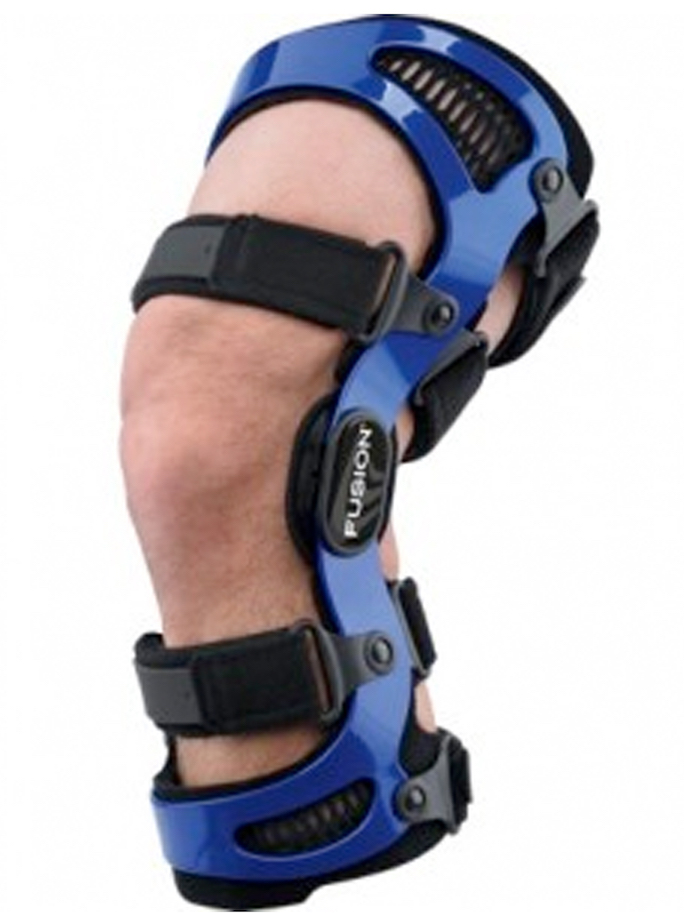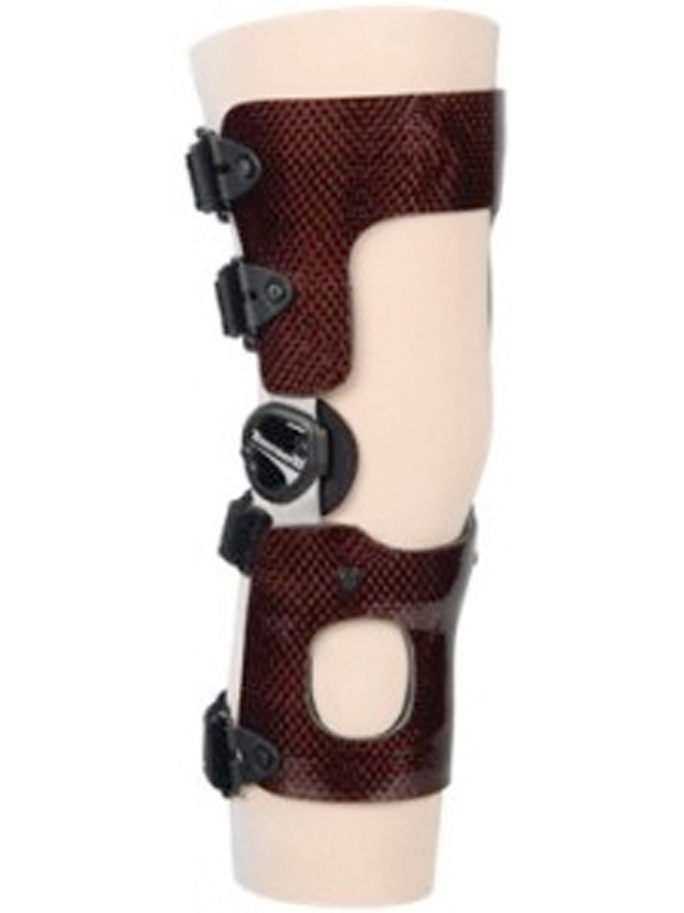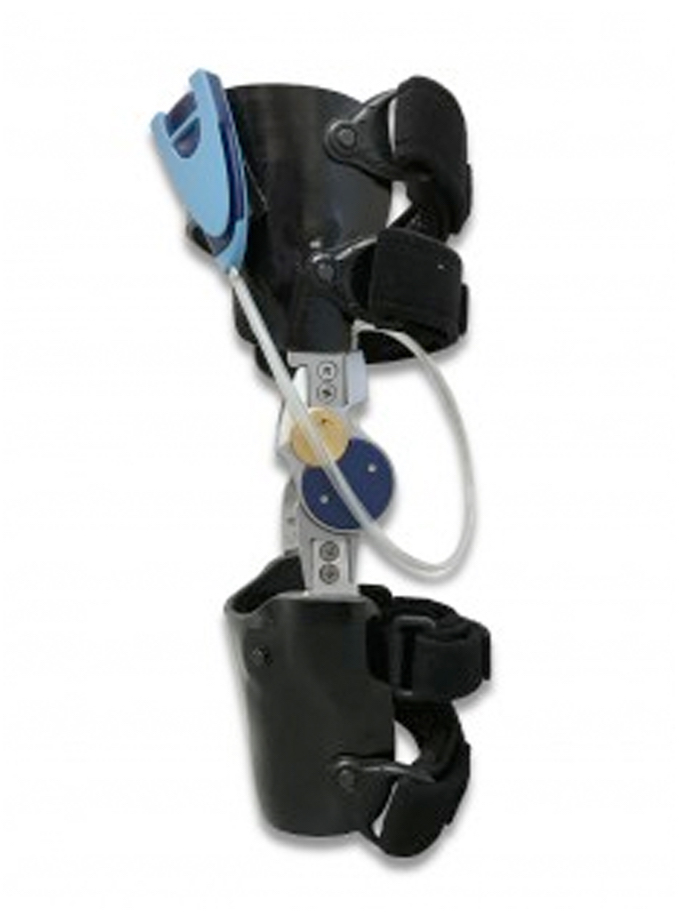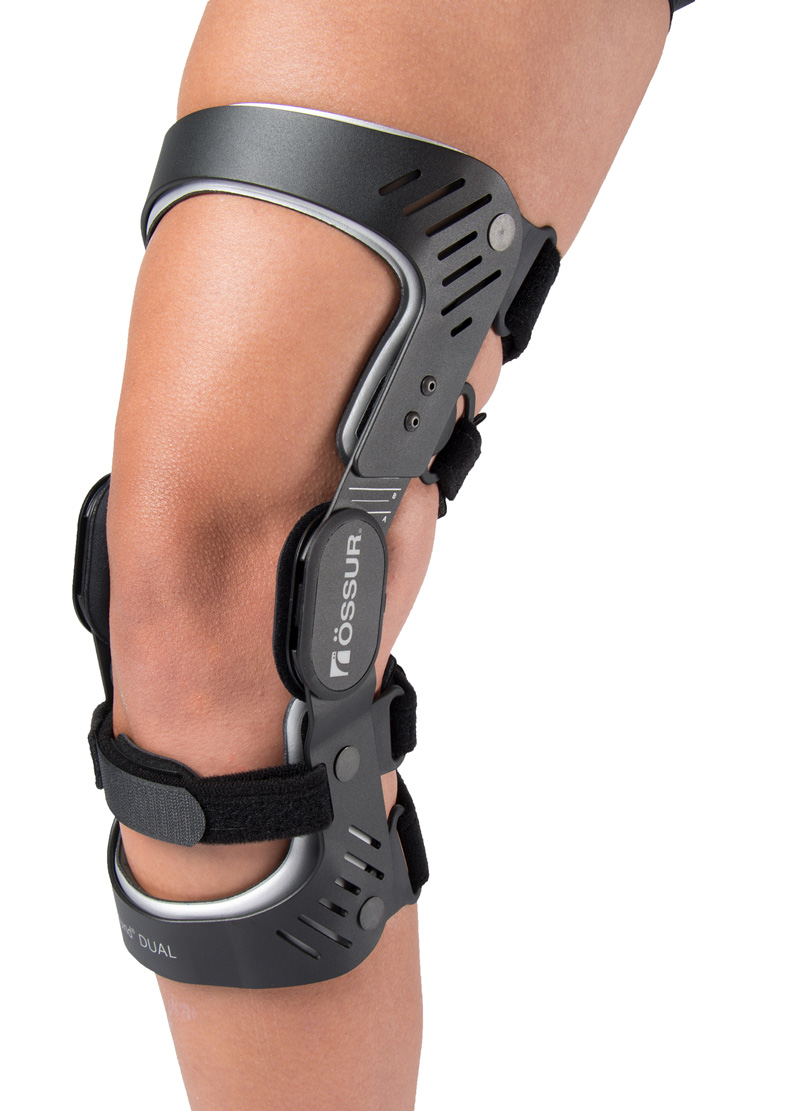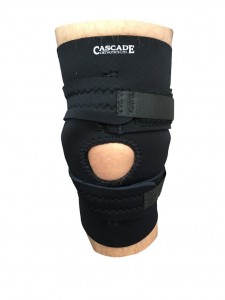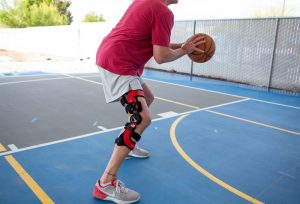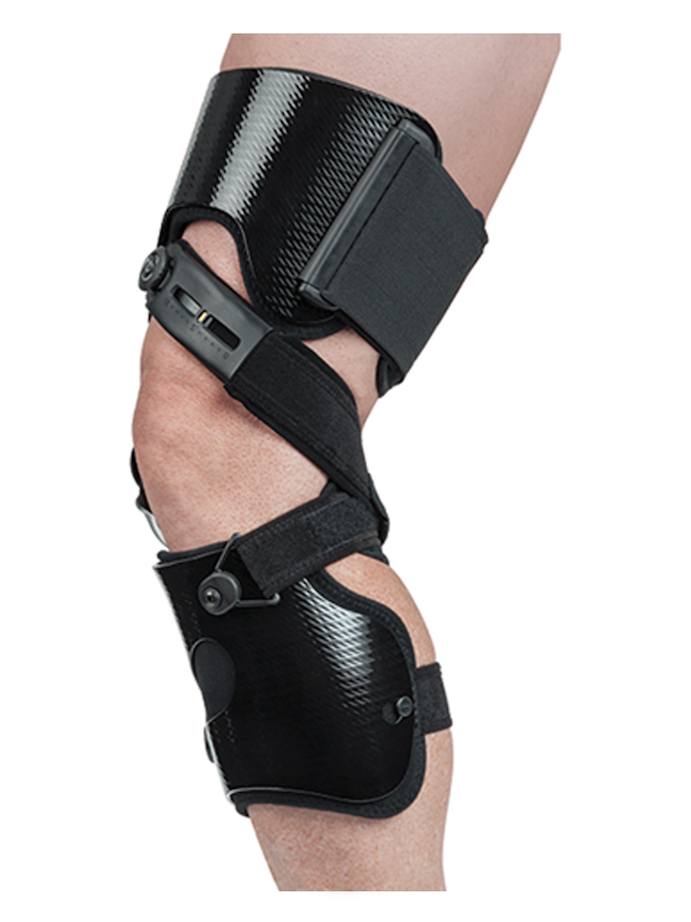
Unloading
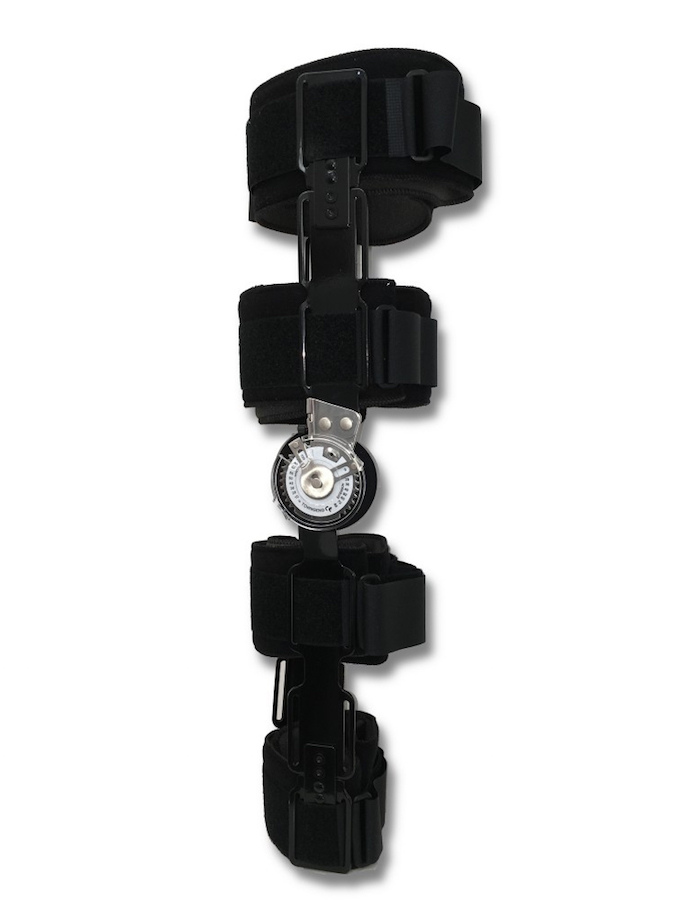
Rehabilitation
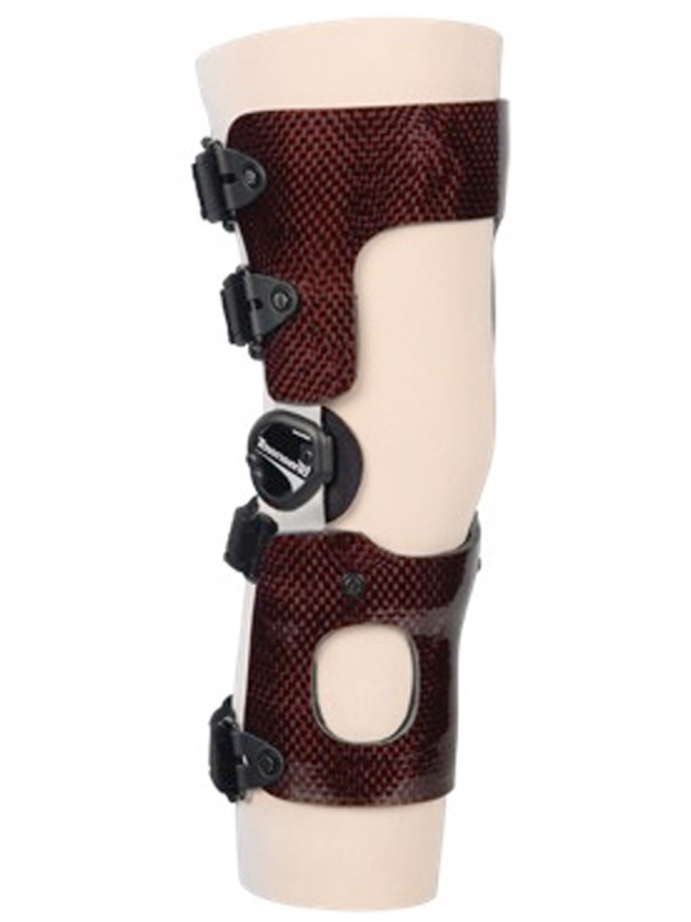
Stabilizing
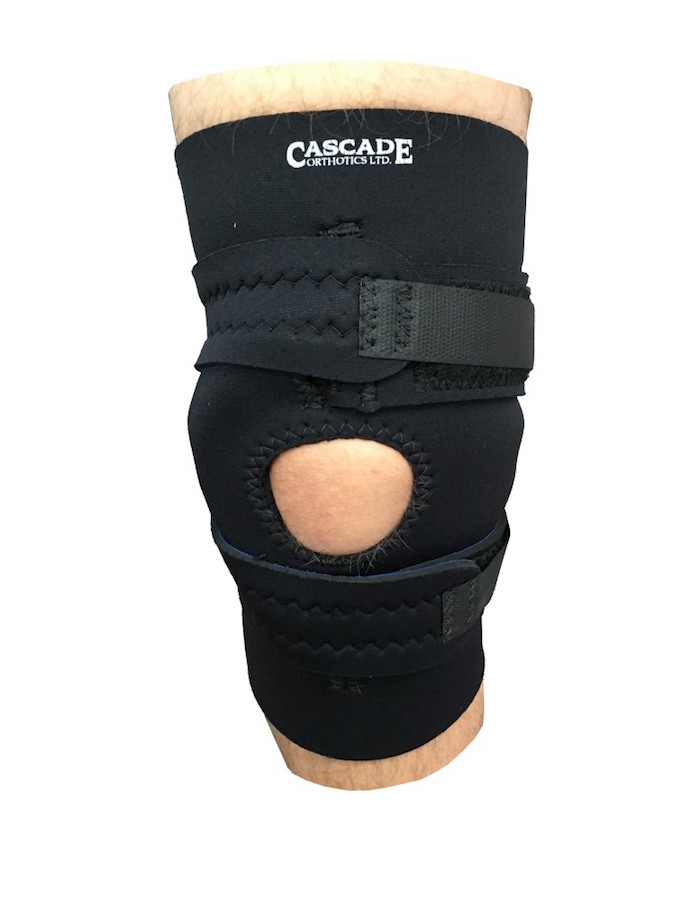
Soft Goods
There are many situations where a Knee Brace (Orthosis) may be necessary, but the most common reasons are ligamentous instability, osteoarthritic degenerative changes and injury rehabilitation. Soft orthoses may also be used for mild instabilities.
Stabilizing Knee Orthoses
The purpose of a stabilizing brace is typically to replace the function of the stretched or absent ligaments of the knee and to enable normalized knee motion. Many different knee Orthosis manufacturers can fabricate a custom knee brace, and it is up to the Orthotist to determine the most appropriate design based on a detailed assessment of the knee and the patient’s functional requirements.
Unloading Knee Orthoses
With Osteoarthritis, the articular cartilage is often damaged and/or worn out on one side of the knee. If the other side is still relatively intact, the bodyweight applied to the knee may be shifted or unloaded onto the less-compromised side. This is best accomplished with a custom-made knee Orthosis that can redistribute the forces at the joint. Additionally, this type of Orthosis is appropriate for a patient with a severe unilateral tibial plateau fracture and occasionally severe meniscal injuries.
Significant improvements in PCL Rehabilitation Braces
PCL Rebound for Posterior Cruciate Ligament Injuries
Historically, posterior cruciate ligament injuries have been challenging to treat conservatively and surgically. As the PCL prevents the lower leg from translating backwards relative to the thigh, it is always stressed, even when lying on ones back in bed.
The Ossur PCL Rebound Knee Orthosis is a dynamic orthosis with an anterior (forward) directed force profile that closely matches that of the PCL (LaPrade et al., 2014). The advantage of this is that as the knee flexes, the orthosis increases the degree of support that would otherwise be supplied by the PCL. The device located on the back of the calf achieves this. It is really important if the PCL is completely torn or immediately post operative to allow the surgery to heal sufficiently prior to loading it. Given the intention of this brace and what it achieves, it is possible to extrapolate some potential benefits, based on research. Isolated third degree PCL tears after 12.2 year follow-up has demonstrated increased incidence of meniscal tears (2x), knee osteoarthritis (6x) and TKA (3x) (Sanders et al., 2016). Anecdotally, postoperative use of the PCL Rebound Brace, has resulted in decreased PCL laxity, therefore potentially reducing future incidence of knee osteoarthritis, total knee replacements and meniscal tears.
Effectiveness of this brace is greatly dependent on brace application as soon as possible post surgery as a significant degree of healing occurs in the first 4-6 weeks. The PCL Rebound Orthosis is designed to be worn 24/7 for a period of time determined by your surgeon. This is often several months. Ultimately, this treatment method appears to improve the standard of care compared to previous treatment protocols and future research will provide a clearer picture of the overall benefits of this type of orthosis.

